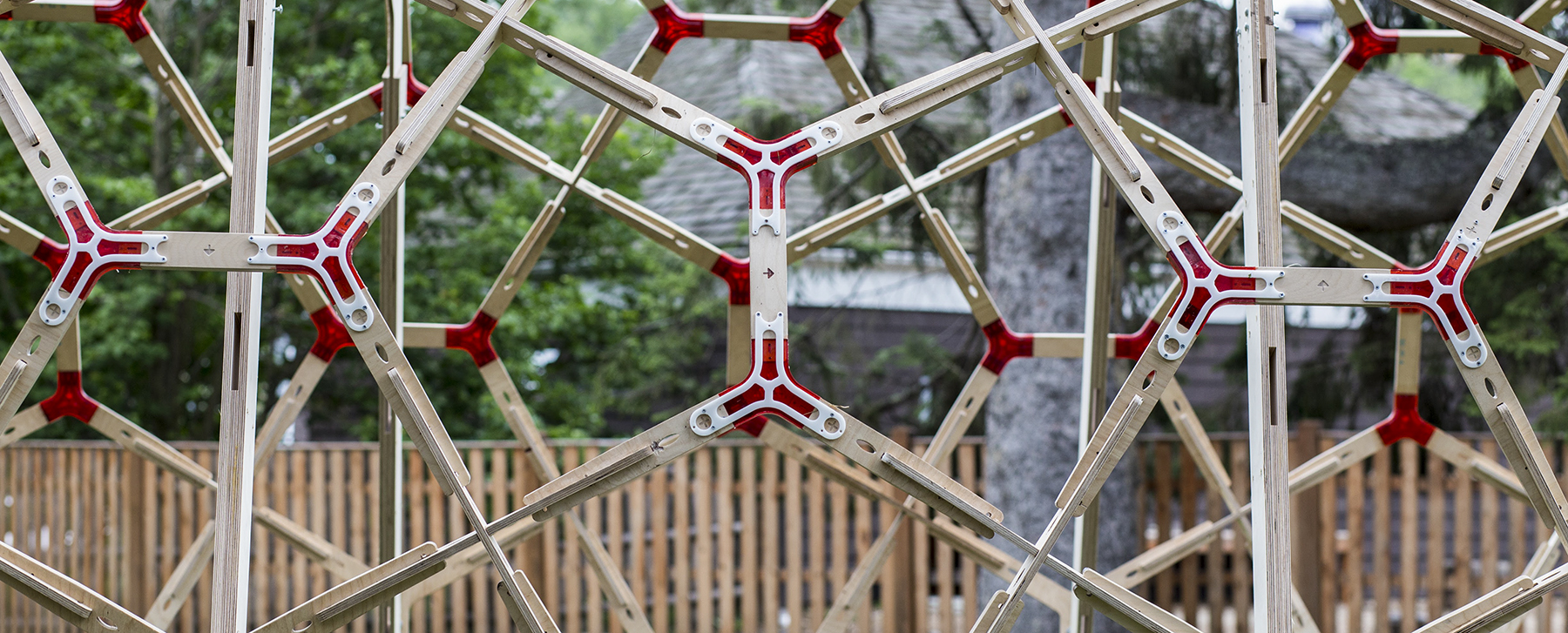Sasaki’s in-house research and resource arms, which include Sasaki Strategies, Sustainability, and the Technical Resource Group (TRG), consistently look for ways to improve workflows through research and innovation for the benefit of our practice and the industry at large.
This is the first post in the TRG series, which focuses on one of Sasaki’s in-house research and resource arms, the Technical Resource Group. Subsequent posts can be found at the bottom of this article.
“’Business as usual’ doesn’t cut it anymore with conventional fee-for-service as a percentage of construction cost contracts—it’s a race to the bottom,” says senior associate and architect Brad Prestbo, whose active involvement in TRG over the years has helped to shape a lasting innovation culture. “We are disrupting our industry by questioning why and how we work, from the smallest workflow adjustment to a major shift in building technology that vastly improves how humans experience our buildings.”
An Innovation Culture
Literature on innovative cultures abound, but at Sasaki it is the very DNA of our studio that allows pockets of innovation to form and then spread into many areas of the practice—overlapping and picking up more passionate innovators along the way. Leadership is diffuse with thirty principals heading a 270-person practice, which can be an asset in creating room for ideas to percolate. “A relatively flat organization with three major areas of practice—site, architecture and interiors, and planning and urban design—gives rise to healthy opportunity for experimentation,” explains managing principal, Pablo Savid-Buteler, LEED AP. “It’s the way that works best for us and we have seen so many young designers take initiative in pioneering new software and fabrication techniques that have implications for not just us at Sasaki, but the industry as a whole.”
“The prevailing belief is that a good idea can come from anywhere and with just one advocate and a supporting team, anyone can chase an idea,” adds, senior associate and architect Gerry Gutierrez, AIA, CDT, who has led several in-depth research and innovation projects in his time at Sasaki.
Prestbo and Gutierrez are taking their learnings to their peers around the country, presenting on how the architectural industry is being disrupted. They will present their talk, “Architecture Disrupted: Transforming an Evolving Industry” on eight separate occasions by year’s end. The two aim to engage fellow designers in thinking about how to cultivate this nimble think tank mentality within their own walls by leveraging the unique cultural and structural aspects of their respective practices.
A highly innovative experimentation ethos, of course, brings about the occasional dead-ends and wild goose chases, but even those false starts are not without their benefits.
“You learn even from the mistakes and mess-ups,” says associate Meredith McCarthy, a designer who has been hands-on in experimenting with Sasaki’s Digital Collaboration tools. “Like anything else in design, sometimes you discover that one serendipitous insight you need within your mistakes. Sometimes those offshoots help unlock the very problem you’re grappling with.”
R&D
For Sasaki’s part, it remains this hands-off, looser support of innovation that allows the breakthroughs to happen. In the past year alone, Sasaki has expanded its grassroots R&D efforts exponentially:
A small team of maker enthusiasts jump-started a thriving maker culture with a humming hub within our on-site FabLab, complete with CNC Router and 3D printers spread around the office; designers fed up with cumbersome software limitations have started scripting their own workarounds to revolutionize the efficiency and quality of our architecture and landscape architecture work; a SWAT team of tech-savvy designers and researchers are integrating virtual reality into everyday architecture workflows so that designers can augment their designs with the information that only a full-scale, 3D-immersive experience can provide.
“With so much energy contained within our own walls, we’re now turning our attention to connecting with others. We know our peers are just as energized, and we stand to learn a lot from sharing knowledge and research,” says Prestbo, who co-founded the Boston Society of Architect’s MakeTank in 2016—a cross-disciplinary group of designers, fabricators, programmers, and self-described “makers” interested in exploring the intersection of making and architecture and connecting diverse communities, all in search of the next frontiers of fabrication.
In that spirit of dialogue, this coming year our designers will be taking to the conference circuit to start sharing the fruits of their labor with the industry. Stay tuned for more details.
Other posts in this series:
If you attended the BiLT North America conference in early August, click here to learn more about the specific innovations Sasaki designers presented on in Toronto.
Read about two Sasaki architects who published research on Multiple-objective Optimization Formatting and what that means for designers, here.
Sasaki Strategies Co-Director Ken Goulding and R&D Project Leader Colin Booth sat down to discuss design and virtual reality in this Q & A.

